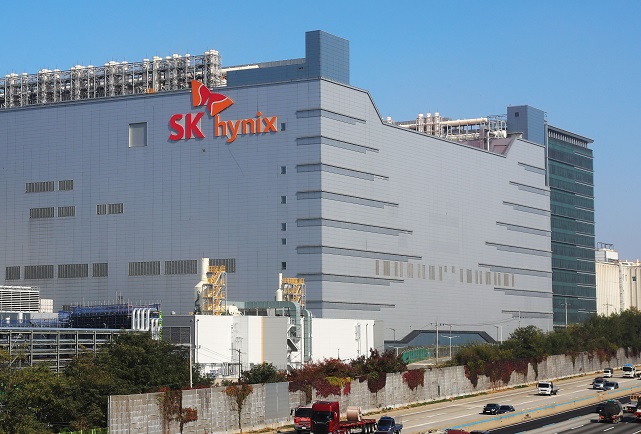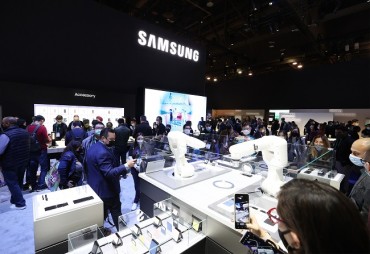
SK hynix CEO Lee Seok-hee speaks to reporters following an event hosted by the Korea Semiconductor Industry Association in Seoul on Oct. 29, 2020. (Yonhap)
SEOUL, Oct. 29 (Korea Bizwire) — Lee Seok-hee, the CEO of SK hynix Inc., said Thursday he believes the company’s 10.3 trillion won (US$9 billion) acquisition of Intel Corp.’s NAND memory business is not an expensive deal.
South Korea’s No. 2 chipmaker last week announced it agreed to buy Intel’s non-volatile memory unit for $9 billion, including its solid state drive (SSD) business and a NAND flash chip plant in Dalian, China.
If completed, it will be the largest-ever acquisition by a South Korean firm, far exceeding Samsung Electronics Co.’s $8 billion deal in 2016 to buy Harman International Industries Inc.
“I don’t think it is expensive,” Lee told reporters after a Korea Semiconductor Industry Association event in Seoul. “It’s a price that comprehensively reflects Intel’s intangible assets, including its SSD capability and solutions. The valuation was fair.”
Lee, a former Intel man who worked for the U.S. semiconductor giant between 2000 and 2010, said the reason why the company bought Intel’s NAND unit was to boost its solutions capability.
“We developed the industry’s first 128-layer NAND flash and already made a big advancement in chip manufacturing,” he said. “But we wanted to beef up solution offerings and complete our product portfolio.”
The deal will make SK hynix the world’s second-largest NAND flash chip producer.
According to market researcher TrendForce, SK hynix was the world’s fourth-largest NAND flash maker with an 11.7 percent revenue share in the second quarter of the year, while Intel was ranked sixth with an 11.5 percent revenue share.
Samsung led the market with a 31.4 percent share, followed by Japan’s Kioxia Corp. with 17.2 percent.

This photo, taken on Oct. 20, 2020, shows South Korean chipmaker SK hynix Inc.’s plant in Icheon, south of Seoul. (Yonhap)
Shares in SK hynix have been falling since the company announced the deal, with analysts saying that investors are apparently concerned about the chipmaker paying a lump sum of money in a relatively short period of time.
Under the deal, SK hynix will first have to pay $7 billion to Intel by late 2021 and give the remaining $2 billion by March 2025.
SK hynix’s share price was 85,200 won last Tuesday, but it closed at 81,700 won on the Seoul bourse Thursday.
To prepare funds for the deal, analysts here have been predicting that SK hynix might sell its stake in Kioxia.
In 2017, SK hynix joined a global consortium to invest in Kioxia., then known as Toshiba Memory Corporation Corp., and injected about 4 trillion won. The consortium, which includes Apple and Bain Capital, now has a 49.9 percent stake in Kioxia.
However, Lee hinted that such a move may not happen in the time being.
“The reason why we invested in Kioxia was not for a short-term return but to create a new cooperation opportunity and ecosystem in the long term,” he said.
“Since its initial public offering (IPO) has been postponed, we will keep monitoring its strategic value.”
Meanwhile, Lee said SK hynix’s latest M16 chip line in Icheon, south of Seoul, is set to be completed by the end of this year.
He expected the facility to mass produce the fourth-generation 10-nanometer (1a) class DRAM chips with extreme ultraviolet (EUV) lithography technology in the second half of next year.
(Yonhap)






